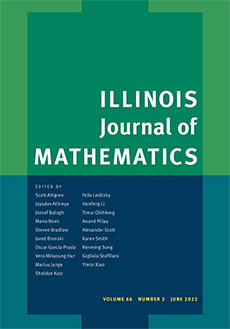Abstract
A subset $\mathcal{P}$ of $\mathbb{N}^2$ is called Schur bounded if every infinite matrix with bounded scalar entries which is zero off of $\mathcal{P}$ yields a bounded Schur multiplier on $\mathcal{B}(\mathcal{H})$. Such sets are characterized as being the union of a subset with at most $k$ entries in each row with another that has at most $k$ entries in each column, for some finite $k$. If $k$ is optimal, there is a Schur multiplier supported on the pattern with norm $O(\sqrt k)$, which is sharp up to a constant. The same characterization also holds for operator-valued Schur multipliers in the cb-norm, i.e., every infinite matrix with bounded \emph{operator} entries which is zero off of $\mathcal{P}$ yields a completely bounded Schur multiplier. This result can be deduced from a theorem of Varopoulos on the projective tensor product of two copies of $l^\infty$. Our techniques give a new, more elementary proof of his result. We also consider the Schur multipliers for certain matrices which have a large symmetry group. In these examples, we are able to compute the Schur multiplier norm exactly. This is carried out in detail for a few examples including the Kneser graphs.
Citation
Kenneth R. Davidson. Allan P. Donsig. "Norms of Schur multipliers." Illinois J. Math. 51 (3) 743 - 766, Fall 2007. https://doi.org/10.1215/ijm/1258131101
Information





